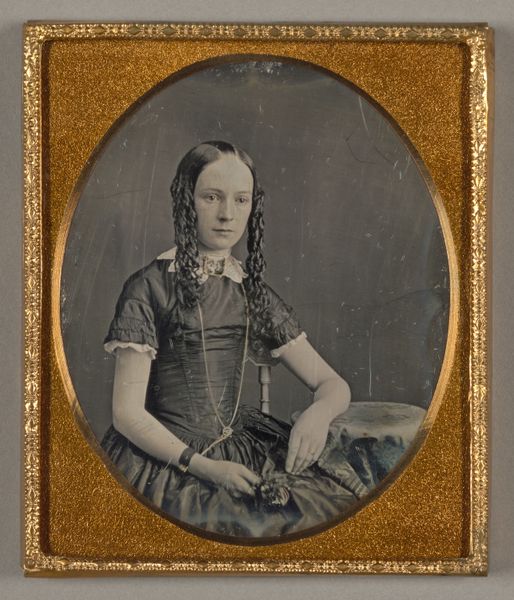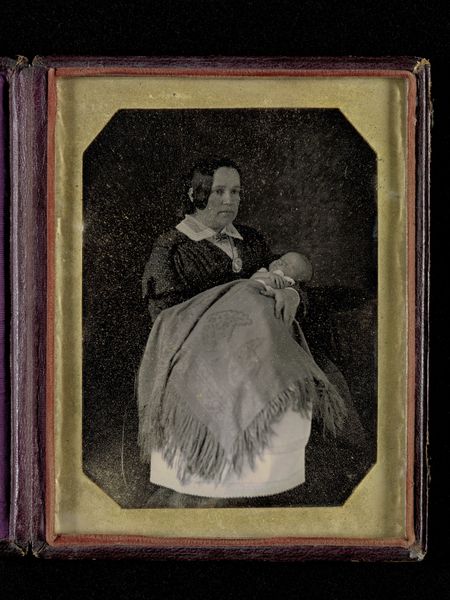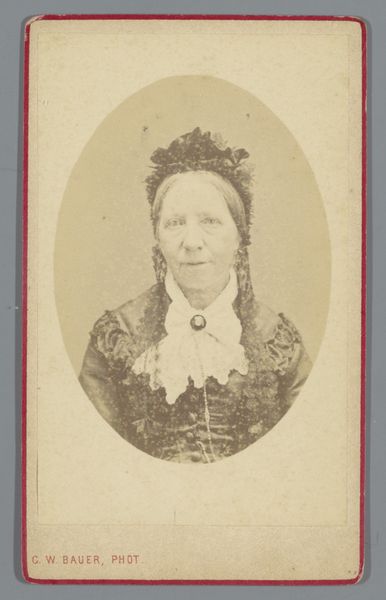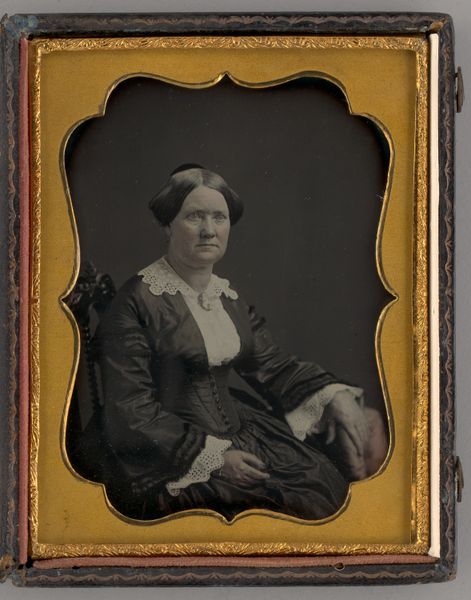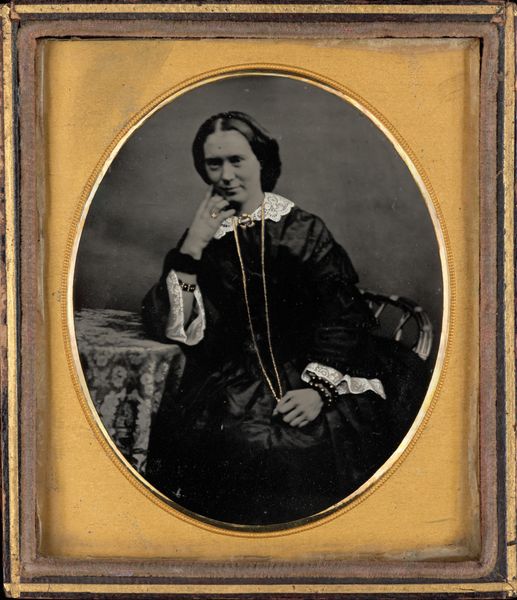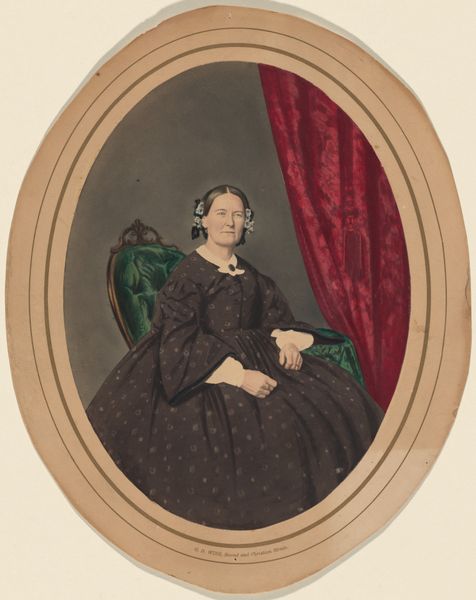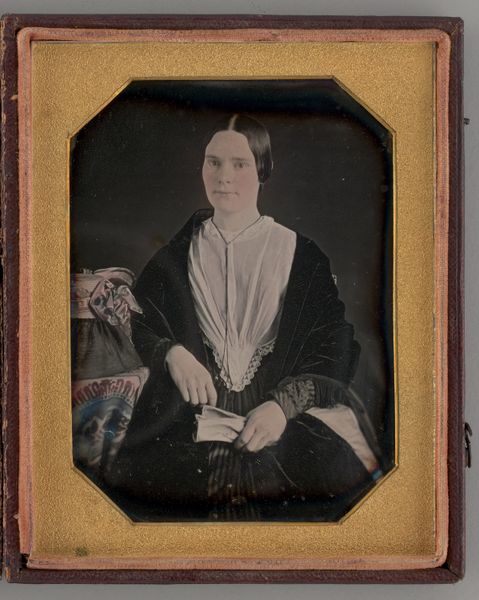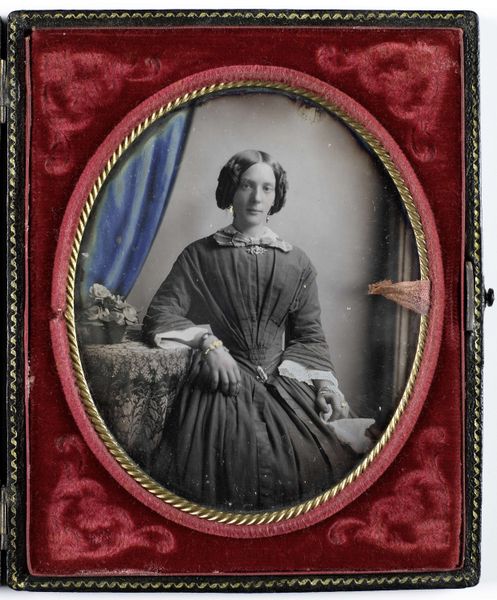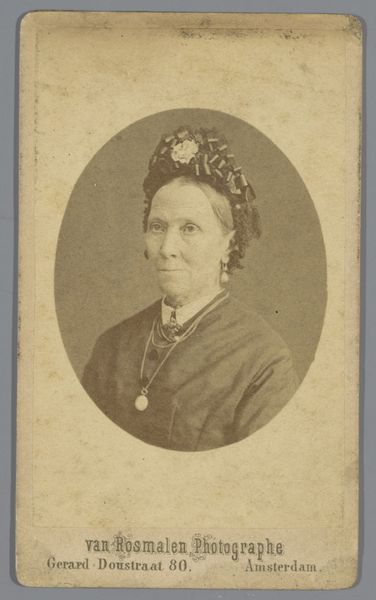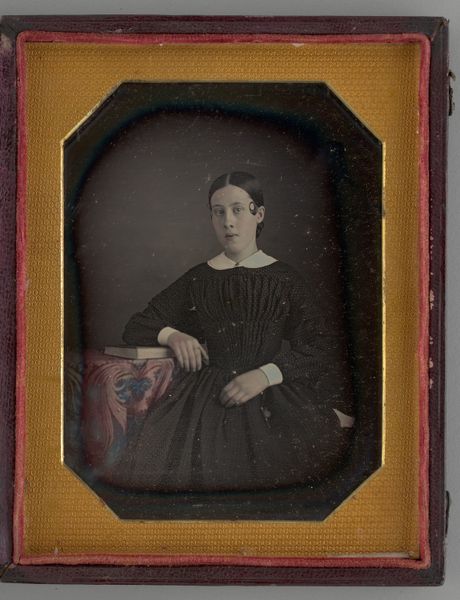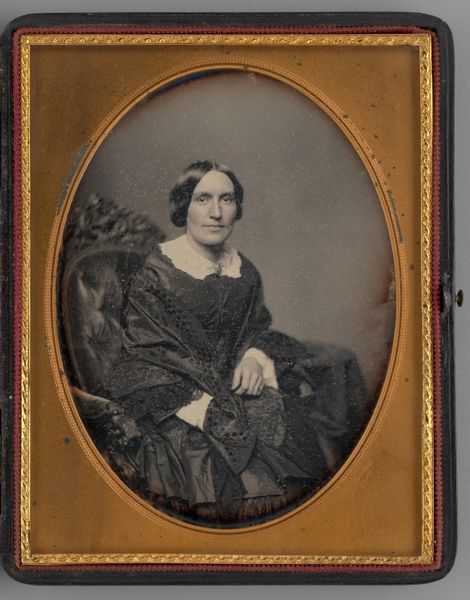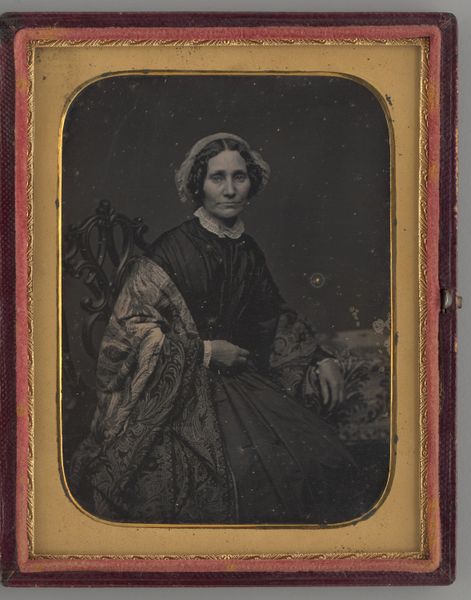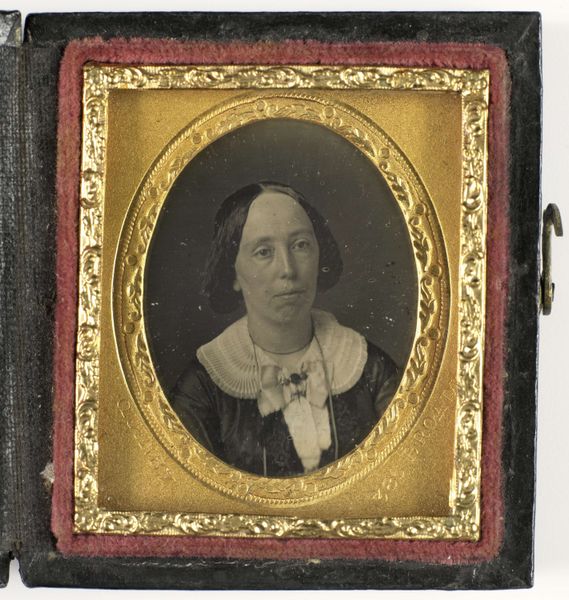
carving, daguerreotype, photography, impasto
#
portrait
#
carving
#
carving
#
daguerreotype
#
figuration
#
photography
#
impasto
#
tile art
#
carved
Dimensions: image (visible): 8.8 × 7 cm (3 7/16 × 2 3/4 in.) mat: 11.4 × 8.4 cm (4 1/2 × 3 5/16 in.) case (closed): 12 × 9.5 × 2 cm (4 3/4 × 3 3/4 × 13/16 in.)
Copyright: National Gallery of Art: CC0 1.0
Curator: This is a daguerreotype, an early photographic process, capturing the likeness of Mrs. Gideon Lane around 1855, a creation attributed to Hamilton Campbell. It's more than just a photograph, though; it feels like a portal. Editor: It does feel like a portal! Looking at it, the word "dignified" springs to mind, but also…melancholy. It’s beautifully framed, almost like a precious jewel, but her gaze is so direct, so unsmiling. I wonder about her story. Curator: The lack of a smile was common. Exposure times were long, holding a smile that long would have been taxing. These daguerreotypes offered a new kind of immortality. Before this, only the wealthy could afford a painted portrait. Suddenly, the middle class had access to capturing their image. Editor: An interesting point. She seems consciously aware of posterity, as if holding her breath in a timeless in-between space. I imagine the stiff collar, the formal pose. Was it unsettling to confront one's own frozen image like that? Curator: Photography became a societal mirror, literally and figuratively. These images became democratized depictions of an emerging middle class. Imagine the weight of representing oneself "properly" for the future, though the rigid conventions could not always conceal hints of a quiet vulnerability. Editor: Vulnerability is palpable, isn’t it? The dark backdrop accentuates this. It makes you want to know the inner landscape of Mrs. Lane, who seems so stoic on the surface. Do you think photography altered perceptions of grief or memory, perhaps intensifying them, given that photographic record? Curator: Absolutely. The ability to physically possess an image of a loved one who was far away or had passed created a powerful new connection. But it also altered the rituals of remembering; what had been held only in the mind could now be held in the hand. Editor: Mrs. Lane definitely evokes such a complex tension between revelation and reserve. It’s that gaze – timeless, present and remote all at once. Curator: A lovely observation. So yes, consider the image, but also how early photography changed self perception. Editor: Thank you! That daguerrotype certainly invited an introspective moment for us today.
Comments
No comments
Be the first to comment and join the conversation on the ultimate creative platform.
